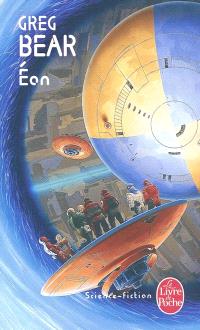

Like many American writers of his generation Bear’s politics are not far below the surface. Patricia especially, an elusive mathematical genius, can seem stranger than the post-humans: ‘We’re both odd birds,’ as one character remarks to her (Chapter 58).


Bear’s characters too are always complicated. Bear was an English major, not a trained scientist or engineer like some of his contemporary hard-sf writers like Benford and Brin, and this perhaps gives his depiction of science ideas a certain imaginative looseness that leads to some wild extrapolations. While the book is rooted firmly in space opera traditions, and shows Bear’s inspiration from the works of the like of Anderson and Clarke, Eon is uniquely Bear. Even the end of the world is only a chapter break in this huge novel.Įon was written in the years in which Bear found his stride as a modern great of hard SF, stretching roughly perhaps from Blood Music (1985) to Queen of Angels (1990) he was 34 when it was published. People were no more substantial than pine needles’ (Chapter 32). from city to city, continent to continent. But then the presence of the Stone kicks off a nuclear war, sketched in a few sentences: ‘the flames leaping. The sixth chamber contains enigmatic machinery, and the seventh chamber – well, that’s a super- TARDIS the seventh chamber goes on forever. And in the library Patricia is handed a copy of Mark Twain’s Tom Sawyer … The Stone, a copy of the asteroid Juno, is a human artefact, wandering in from another timeline. There’s a city in the second chamber – called Alexandria – with a library (the characters spend a lot of time in libraries, a trope Bear would return to in such books as City at the End of Time ). The first chamber is habitable for humans, with Earth-like vegetation. There are no less than seven chambers inside the rock, connected by a threadlike ‘singularity’ along the asteroid’s axis. The first few chapters particularly are a classic of breathless exploration, as Patricia Vasquez, a hotshot relativistic mathematician, is taken through the Stone, and we witness its unfolding wonders through her eyes. But conceptually Eon knocks Rama out of the park. So far so Clarke’s Rama, you might think, which was another tale of an immense spacecraft wandering into the solar system initially the Stone has the feel of the great rotating space habitats much loved of 1970s space visionaries. But the Stone, as the Americans call it, turns out to be hollow. Humanity is locked in a continuing Cold War between US and USSR, and the competitive exploration of the asteroid only exacerbates the tensions. In 2005, after the observation of a supernova-like burst of energy, an asteroid shows up in Earth orbit. President of the BSFA and multi-award-winning author, Stephen Baxter, offers his thoughts on Greg Bear’s 1985 Big Dumb Object novel, Eon.


 0 kommentar(er)
0 kommentar(er)
